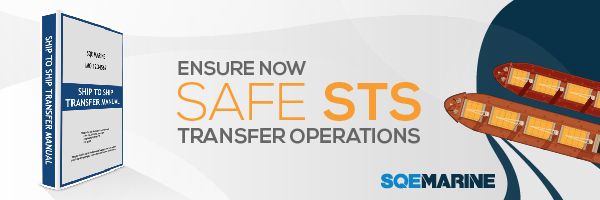SQE Marine consulting firm issued a new circular to inform about the latest requirements of ship to ship transfer operations for dry bulk carriers, following the latest edition of RightShip RiSQ 3.1. Ship to ship (STS) transfer is the term primarily applied to the transfer of dry bulk cargo between sea-going Bulk Carriers.
The STS operation can be undertaken at sea, with either both vessels underway or one ship mooring alongside another at anchor. Operations are sometimes carried out in port, under the jurisdiction of a port or harbor authority, with one ship secured to a shore installation and one or more vessels mooring alongside.
Double Banking Operations can be considered as a modified form of ship to ship (STS) transfer due to some of the risks involved, such as damage to the vessel or damage to the environment in case of fuel oil or dry cargo spill.
STS is considered to be a High Risk operation and requires a detailed preparation and trained/experienced personnel to participate.
What is new?
The latest edition of RightShip RiSQ 3.1 includes anew chapter for Ship to Ship Transfer. In accordance with this chapter 17, each ship should be equipped with an effective Ship to Ship Transfer Plan.
This STS plan should cover the following issues:
- General Safety
- Regulatory Compliance
- Operational Procedures
- Risk Assessment
- Emergency Response
- Training and Competence
- Documentation and Record-Keeping
Shipping industry has a long history on Ship to Ship transfer operations, however this experience has been gained through liquid cargo transfers. The commonly accepted standard for liquid Ship to Ship Transfers is the OCIMF STS Transfer Guide (last edition 2013).
 For dry bulk sector there is no such common accepted guidance issued yet.
For dry bulk sector there is no such common accepted guidance issued yet.


































































